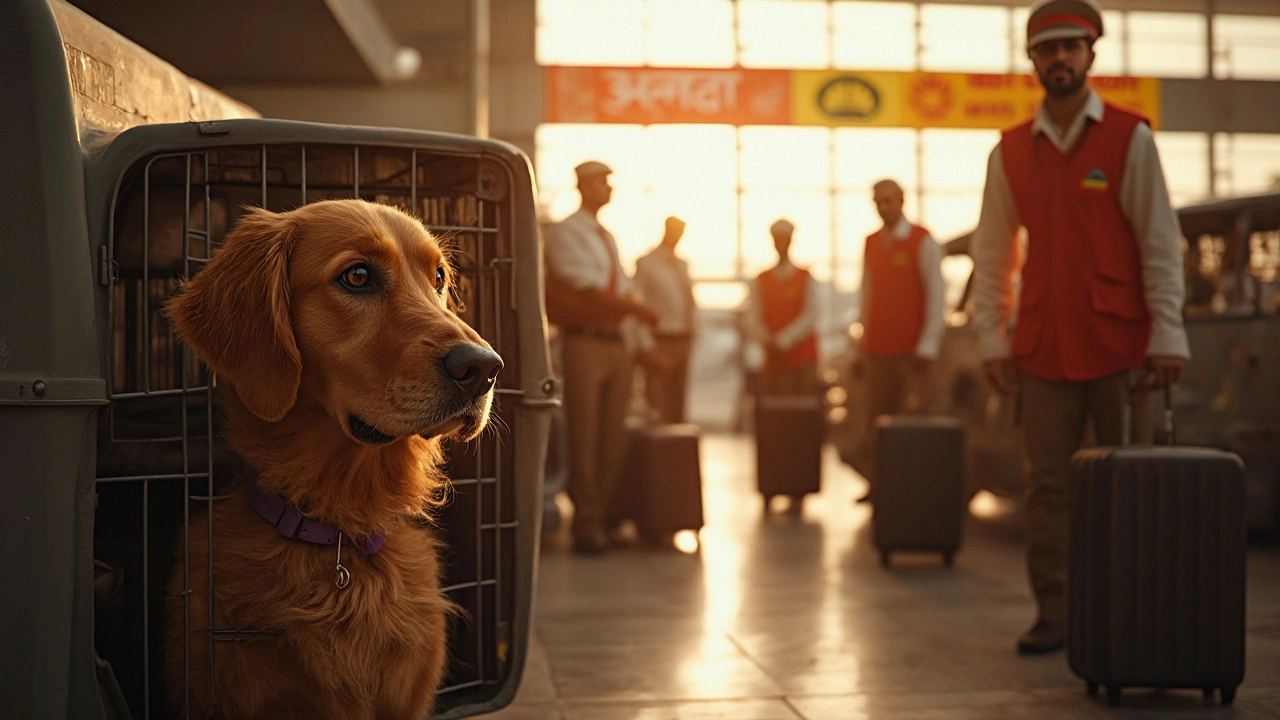Risks of Flying Dogs: Real Talk for Pet Parents
Thinking about taking your dog on a plane? Before you book a seat, you need to know what the trip can actually do to your furry friend. From temperature swings in the cargo hold to the anxiety of a cramped cabin, the sky isn’t always a friendly place for pups. This guide pulls together the biggest hazards and gives you straight‑forward steps to make the journey safer.
Cabin vs. Cargo: The Big Decision
Most airlines let small dogs sit on your lap or in a carrier under the seat. That sounds cozy, but it also means your dog stays in a pressurized cabin with you, which can be noisy and stressful. Bigger dogs often have to go to cargo. The cargo hold is pressurized, but temperature control can be hit‑or‑miss, especially on long hauls. Studies show higher rates of dehydration and heat‑related issues in cargo, especially for brachycephalic breeds like Bulldogs or Pugs.
Before you decide, check the airline’s specific rules. Some carriers ban certain breeds, set weight limits, or require a health certificate. If your dog fits the cabin rules, that’s usually the safer bet—just make sure the carrier is airline‑approved and fits under the seat.
Health Checks and Pre‑Flight Prep
Take your dog to the vet 24‑48 hours before the flight. Ask for a clean bill of health, a copy of the vaccination record, and a note confirming the pet can handle travel stress. If your dog is older, has heart or breathing issues, or is on medication, discuss whether flying is wise at all.
Hydration is key. Give your dog water right before the flight, but avoid a full belly of food to lessen motion‑sickness. Pack a small water bottle and a portable bowl—many airports have pet water stations. A light, chew‑safe toy can help calm nerves, but steer clear of anything that could get chewed apart in a cramped space.
When you’re at the airport, arrive early. That extra time lets you walk your dog, use the pet relief area, and settle them into the carrier without a rush. Keep the carrier’s label visible with your contact info and the flight details—airline staff rely on it if anything goes wrong.
Finally, consider a vet‑prescribed calming supplement or a short‑acting anxiety medication if your dog gets jittery. Talk to your vet about dosage and timing; many owners find a low‑dose melatonin or a pheromone spray helps keep the pup relaxed without sedation.
Flying with dogs isn’t impossible, but it comes with real risks that you can lower with smart planning. Stay on top of airline policies, get a vet check, keep your pup hydrated, and give them a comfy, well‑ventilated carrier. When you check those boxes, you’re giving your dog the best chance to enjoy the trip—as much as any dog can enjoy sitting in a metal tube.

Is It Safe for Dogs to Fly in Cargo? What Every Pet Owner Should Know
Flying a dog in cargo isn’t as simple as booking a ticket and hoping for the best. Some dogs handle it just fine, but others face serious risks. This article explains what can go wrong, what airlines actually do to keep your dog safe, and how you can prepare to lower the risks. You’ll get hard facts, plus practical tips to help you decide if cargo is right for your pet. Let's make sure your pup’s next trip is as stress-free as possible.
read more



